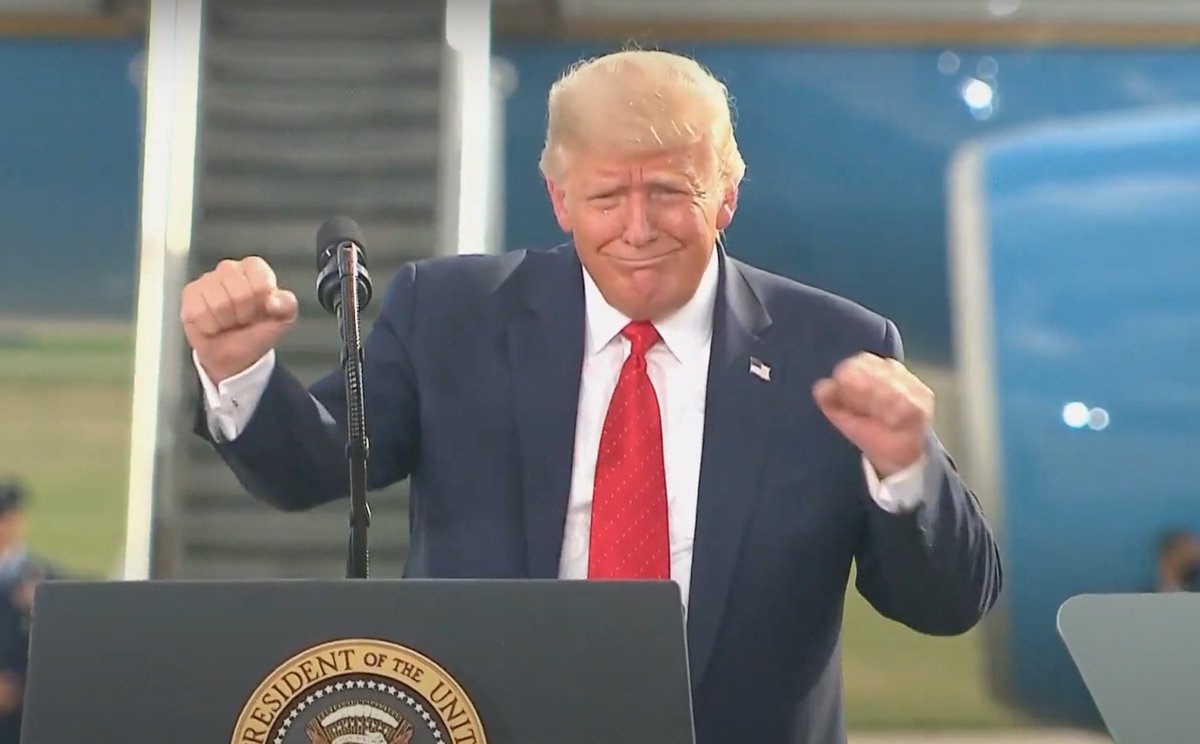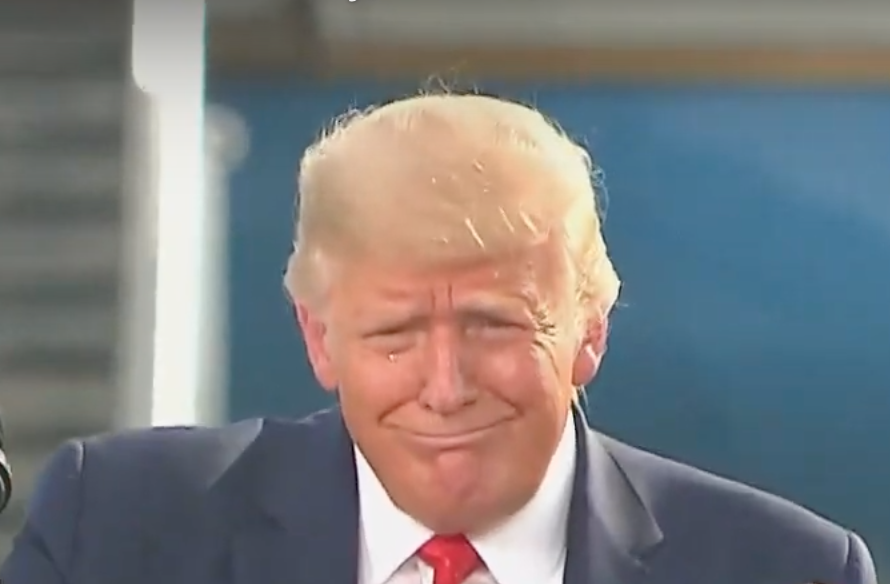THREAD: Body Language Analysis No. 4261: President Trump's Address regarding the Retaliatory Strike on Syria - #Nonverbal & #EmotionalIntelligence • • #DonaldTrump #SyriaStrikes #ChemicalWeapon #BodyLanguage #EmotionalIntelligence #Syria #EQ
1/ On 14 April 2018, the United States, United Kingdom, and France carried out a coordinated retaliatory military air strike against the Syrian government.
2/ This act was in response to the chemical weapons attack the Syrian forces perpetrated upon their own people on 7 April 2018 in Douma. The Syrian government has denied they carried out this mass-poisoning and have called the retaliation a violation of international law.
3/ Shortly after the retaliatory attack, Donald Trump addressed the nation from the White House. A video of this speech is included above. What follows is a nonverbal and paralanguage analysis of one crucial segment of his address.
4/ PRESIDENT TRUMP (continuing at 6:38): "...We saw the anguish that can be unleashed and the evil that can take hold. By the end of World War - One - more than one million people had been killed or injured by chemical weapons. We never want to see that ghastly specter return..."
5/ During 6:47, just as he's finishing saying the word, "... War ..." the President:
• Contracts and Elevates his Central Forehead Muscles
• His mouth hyper-gesticulates
• Crucially, his mouth does NOT take on a saddened configuration
as well as ...
• Contracts and Elevates his Central Forehead Muscles
• His mouth hyper-gesticulates
• Crucially, his mouth does NOT take on a saddened configuration
as well as ...

6/ The President also simultaneously:
• Tilts his head/neck to his right
• Raises his right shoulder
• Tilts his head/neck to his right
• Raises his right shoulder
7/ When a sincere person is feeling emotional or physical pain for her/himself - or experiencing these feelings for another person/group of people via empathy - their:
• Central Forehead Contracts & Elevates
• Mouth takes on a sad, scared, or painful configuration
• Central Forehead Contracts & Elevates
• Mouth takes on a sad, scared, or painful configuration
8/ The elevated central forehead contraction (an elevated CFC, not the entire width of the forehead - but just the central [medial] portion) is a monumentally important nonverbal display - which the vast majority people don't nuance.
9/ This includes those individuals who constantly attempt to feign empathy - and this is exactly what the President is doing here.
10/ Although we certainly don't welcome their bad behavior, we should be thankful for their poor acting skills - for it allows us to suss out the insincere people from the sincere ones.
11/ A split-second later (still during 6:47), as the President says, "... One ...", he shrugs with his:
• Shoulders
• Hands
• Eyebrows
• Forehead
• He also Rapidly torques his head
• Shoulders
• Hands
• Eyebrows
• Forehead
• He also Rapidly torques his head

12/ § Note: Although Donald Trump's forehead is moderately treated with Botox, we are still able to see these important contractions/dynamics.
13/ A shrug indicates the thought-emotion of:
• I don't know
• I don't care
• What does it matter?
• I don't know
• I don't care
• What does it matter?
14/ A shoulder shrug (or any of the lesser-appreciated shrugs) are COMPLETELY OUT OF CONTEXT HERE.
15/ Why would a person be thinking-feeling such emotions when talking about the issue of deaths in chemical warfare? In waging war? If one is operating from the foundation and premise of empathy - there is NO REASON.
16/ Another excellent insincerity tell is exhibited in this same moment from a Paralanguage/Statement Analysis perspective:
• The hyperbolic emphasis of the word "One" (both in tone and in volume).
• The hyperbolic emphasis of the word "One" (both in tone and in volume).
17/ Why is this word emphasized? Always remember: When the less important words of a sentence are emphasized - while the some of the more important ones are monotone/homogenized - it's a monumentally classic signal of insincerity.
18/ When you observe both nonverbal signals of insincerity simultaneous with paralanguage flags of insincerity - you can be 100% certain that the person's thoughts and feelings are not congruent with their words. They are lying. They have other agenda. Protect your flank.
19/ Summary: President Trump was insincere during this address. He was feigning empathy. He's parroting this emotion. He's character acting. It's one thing to be insincere passively - it's more nefarious to actively fake it.
20/ While you may or may not agree with President Trump's decision (or the UK's or France's) to retaliate against Syria (or the precise manner/timing of their retaliation) - that is not what this analysis is discussing. I'm here to analyze and teach nonverbal behavior.
21/ What many people do NOT understand, is when the central forehead is contracted and elevated - but the mouth is not simultaneously sad, scared, or expressing pain - ...
22/ ... the person is experiencing a completely different set of emotions (e.g., CFC with Sad/Scared/Painful Mouth vs. CFC with other types of mouth expressions).
23/ While this may sound like geeky-detail - it's one of the most important nonverbal distinctions you'll ever learn. It will save you time, money, hassle, a bad marriage, and maybe your life.
24/ Commit yourself right now - to collecting images/screen-grabs and their corresponding URLs of these two expression variations. Study them and refer to them often. Whenever you see these displayed by others in your own, real-life experiences - take detailed mental notes.
END
END
• • •
Missing some Tweet in this thread? You can try to
force a refresh









